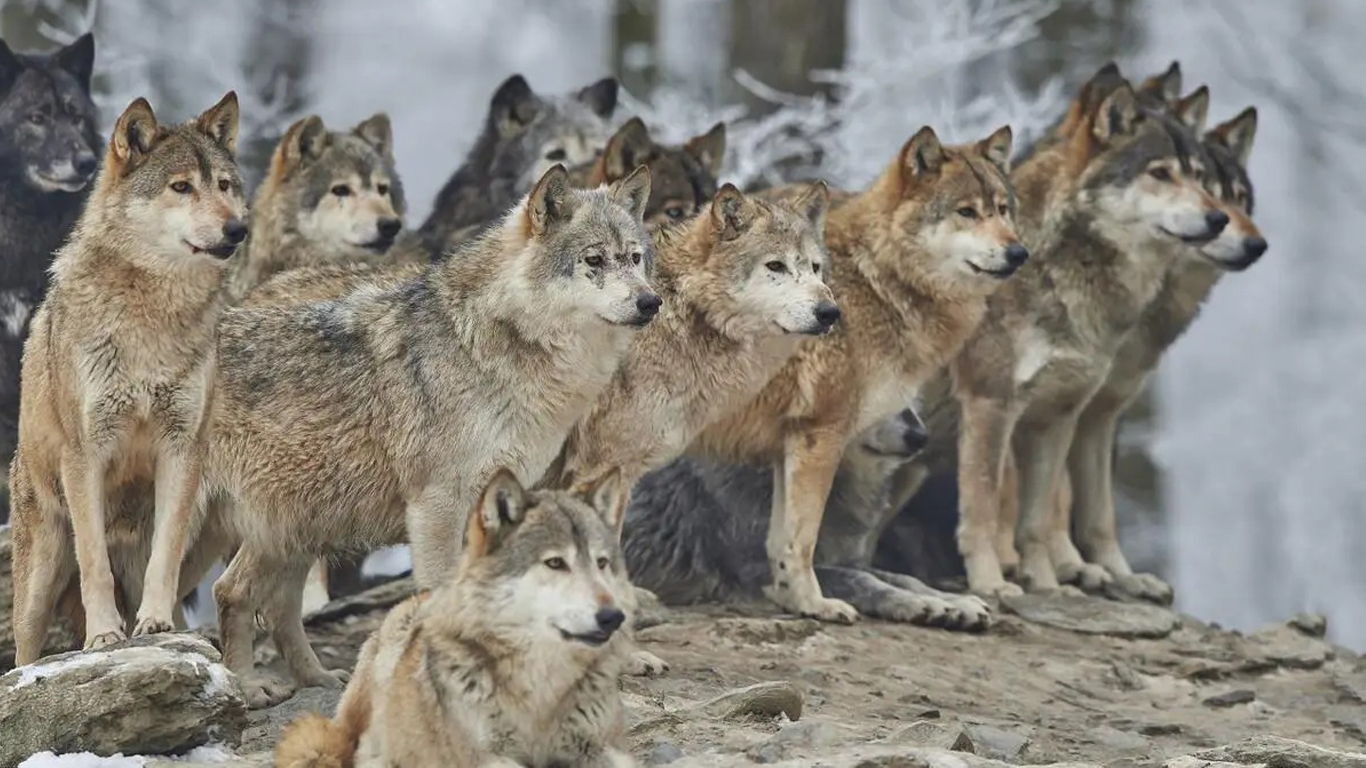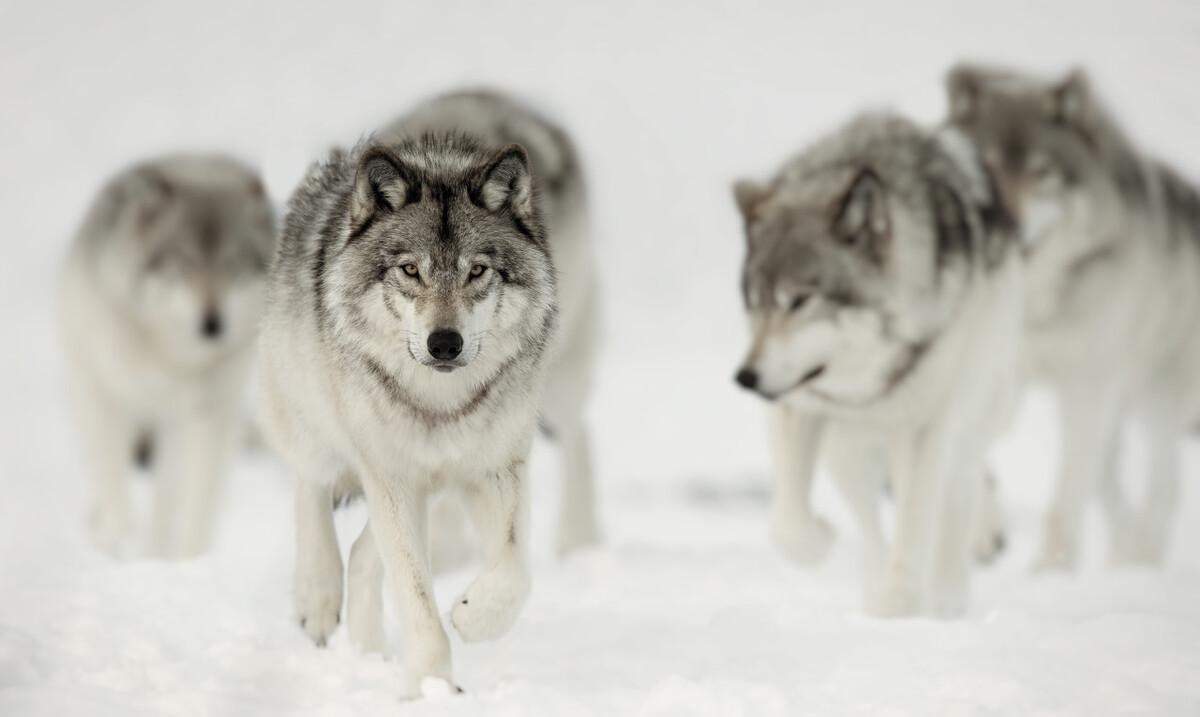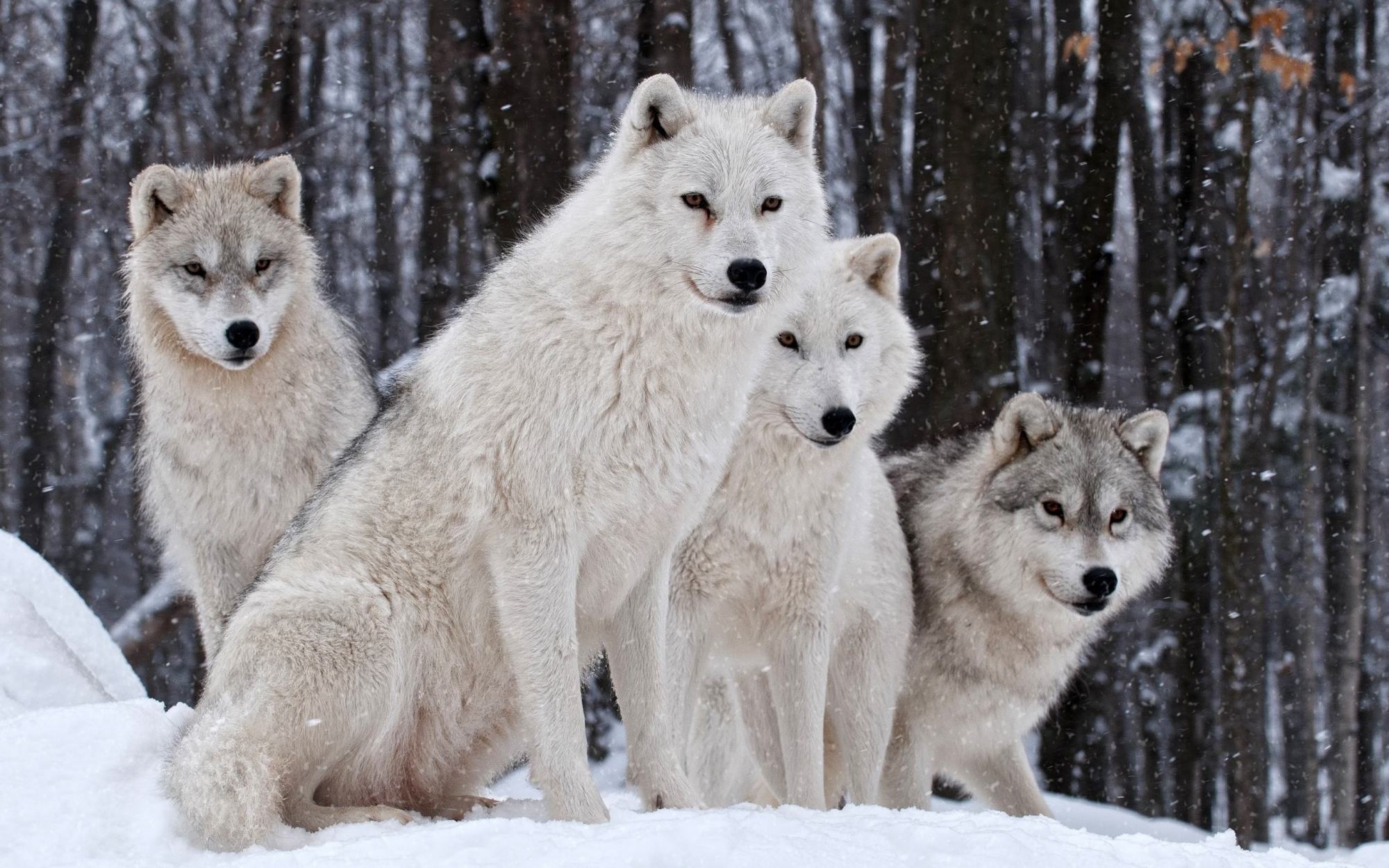
Lone Wolf Myth
The general idea is that there are independent lone wolves living alone. Although there is conflict among pack members, which can cause members to leave the pack, wolves rarely choose to live alone. Without a companion, a lone Wolf becomes prey and cannot survive in the wild.
This is why the meaning of the lone Wolf has charm only in the context of a shared faith. Wolves exist for the survival of the pack, and when they work together, they become smarter, stronger, and better at hunting. In addition, the wolves ensure the protection of the pack and the learning of the cubs. So we're going to move away from the lone Wolf image and focus on the dominance hierarchy and how wolves live together.
What Is A Wolf Pack?
In the animal kingdom, the term "Wolf pack" refers to a group of canids consisting of 2 to 15 individuals, usually close relatives.
Wolves are characterized by a precise hierarchical order in which we distinguish between leaders, intermediate members, and subordinates.
In Wolf packs, the leader of the pack is always the male known as the alpha. By definition, its females become alpha females. Only two individuals of higher rank and different sexes mate once a year.
How Big Are Wolves?
For the most part, canine populations vary between 2 and 15 individuals. The size of a Wolf pack depends on the prey available, and the bigger the prey, the bigger the pack.
What Is The Rank In The Pack?
Whether it's the Mexican gray, red, Mexican, or other Wolf subspecies, similar social structures can be seen in Wolf packs. According to studies of Wolf behavior, wolves are made up of individuals who play different roles within a community. In order of rank:
What Is Alpha In The Pack?
The Wolf pack consists of a dominant couple who act as the leader of the pack. The male is called an alpha. They make all necessary decisions for the well-being of the entire pack and are the only wolves that can breed.
An alpha is by definition the highest ranking individual in the pack hierarchy. Their instinctive task is to organize meals, take the initiative to hunt, and guide the pack during the hunt.
They play a very important role in initiating and organizing the actions of the wolves, and ensure the defense of the territory through scent marking and howling.
Unsurprisingly, the dominant male behaves like a leader and enjoys many privileges. In addition to being the only male able to mate, he is the first to be given food and can eat as he pleases.
Alpha males can be identified by their posture, upright ears, gaze, and straight tail.
What Is The Beta Of The Pack?
The wolves were placed in the second row, behind the Alphas. Their natural mission is to protect the Alphas. We can define them as bodyguards. They work to defuse many dangers in order to protect the prized pack leader. They are the largest and bravest wolves in the pack, they are very energetic and enforce the laws of the pack led by the Alpha couple.
Betas mark their territory by scent secreted by glands located under their toes. They also leave claw marks in strategic locations. They also act as pathfinders in potentially dangerous situations.
Their back lines, while stable, are not as clear as those of alphas. A beta's howl is not as strong as an alpha's howl, and although it is still gutchy, it sounds 3 to 4 times longer than an alpha, thus reinforcing and prolongating the pack's howl.
It is the individual who will approach you first, identify the danger and test you. However, when it approaches an alpha couple, it lowers its head and tail to show its bondage. However, it is still most likely to replace an alpha male if he dies or loses his place, especially during the breeding season.
What Is A Gamma-Wolf?
The gamma-wolves are in the third row, behind the Betas. Their instinctive mission is to control territory and create the illusion of numbers through precise positioning techniques to give the impression that there are more of them. As a result, wolves look bigger. It's a strategy to defend and protect territory.
Regarding howling, the gamma-wolf emits a symphony of sounds, accompanied by barks, howls and growls. Gamal wolves are very suspicious, nervous, and sensitive to the advent of danger, and they are always on guard. They patrol the perimeter of their territory, quickly alerting the betas and alphas of any new elements to keep the pack safe. Beta and alpha wolves rely on them to sound the alarm in order to maintain order within the pack.
What Is The Omega Wolf Of The Pack?
The Omega Wolf is vital to the survival of the pack, even if it is at the bottom of the pack.
The Wolf's instinctive mission is to break the hostilities and reduce the tension within the pack. He's the scapegoat for all the social attacks in the pack.
He stood in the middle of the argument, trying to calm the other wolves, relieve their stress, and move them from aggression to calm. By doing so, he restored his balance. He is a pillar of good understanding among the pack.
We recognize him by his posture, his fur smooth, his ears low and shaved, his tail tucked between his legs.

How Are The Roles In The Pack Determined?
Once again, we are far from the myth of male wild wolves battling it out to determine the leader. In fact, there are two most common scenarios:
The development of the same family
In the first possibility, wolves arose from the development of a family, thus starting with a male and female couple. The first members of the pack will be the pups born after they mate: they will receive hunting and trapping instruction from their parents (focusing on play-based learning), combat, and socializing.
Males and females are their guides, their teachers, and no one questions their authority: they are alpha males and females, and no one challenges their position.
In fact, the leader of the pack (the Wolf in general) is not the strongest, most fighting Wolf, but is led by a breeding pair. The other members of the pack are their offspring and therefore the younger individuals. In fact, it is more correct to say "breed males" and "breed females" than "alpha males" and "alpha females".
The union of two wolves
Second possibility: Before giving birth to pups, the original pair of wolves met another pack (a second pair of wolves or a small family unit with Wolf pups) and decided to join them. Social animals tend to band together because they instinctively know that a pack of wolves has a better chance of survival than a pair.
These opportunities are based on the fact that social animals have the ability to communicate with each other and make precise hunting plans, cooperating and coordinating their actions to disperse prey and achieve maximum results with minimum energy.
When two pairs of wolves hunt together for the first time, one male may be significantly more skilled and experienced than the other, which may easily accept the role of alpha male. If both sides feel they are evenly matched, then confrontation is almost inevitable. But be aware that, as said earlier, they never fight to the death. Such a fight could have serious consequences:
- The winner may also be seriously injured and may not survive.
- The genetic genes represented by the losers will surely be lost forever, which is of no use to the survival of the Wolf breed.
Before they actually bite each other, the two rivals follow a pattern of attitude, imitation, and growling that is often enough to reveal a submissive Wolf and a pack leader. Therefore, a high tail, straight head, and forward ears are signals of strength.
How Do Wolves Work?
Wolves are not a fixed structure: for example, when the number of objects is too high compared to the food resources in the environment, some members may be rejected. But don't think that this persecution applies to lower grade (Omega) objects, because it almost never happens.
In most cases, rejection involves young females (two or three years old on average) who go into heat during the breeding season, which can lead to conflict with the alpha female: If a conflict occurs and the young female decides to leave the pack, she may be followed by a cub who has not yet had a chance to find a mate.
Thus, a new couple is born, which will produce a new Wolf pack. This new pack will hunt in new territory to prevent conflict with the original pack.
The reality Of The Wolf Pack Hierarchy
For a long time, we thought there was a true hierarchy in wolves, in which each member had a specific role and the whole group was led by alpha males and females.
Indeed, this theory of domination needs to be qualified. As mentioned earlier, hierarchies are natural. Scientist and biologist Dave Meche proposed a strict hierarchy, but his research was too short to draw conclusions and tended to involve captive wolves rather than wild wolves.
As a result, a lot of false information has been circulating over the years and continues to spread. However, the scientists have reconsidered their position because the captive wolves they studied were not representative of how the social animals would behave in the wild.
In addition, the concepts of beta and omega are no longer used. There is no real hierarchy within the pack. It's a family whose goal is to protect each other. This is especially important when facing another pack of wolves.
Parents teach the youngest wolves how to hunt, howl, and protect other wolves. It is only when they grow up that they become more actively involved in the life of the pack, such as hunting (reindeer, bison, rodents, and other prey animals) or caring for the youngest wolves when the breeding pair is away. They also participate in the learning of the littlest wolves during the next gestation.
When they reach two years of age, young wolves can leave the pack and find a mate to start a family of their own. Some wolves may also choose to stay longer. They then help the parents feed and educate the young.
How Do Wolves Travel?
Pack members usually travel in a straight line through their territory, one after another, but they may spread out to find prey more easily.
Finally, the order of movement depends on the reason for the movement (hunting or otherwise) and external conditions. For example, in the case of heavy snow, wolves will line up so that the first Wolf can trace the path to save energy.

To Sum Up...
In the end, wolves are closer to humans than we think. No matter what species (Arctic Wolf, Ethiopian Wolf, forest Wolf, maned Wolf...) Wolf family organizations focus on deep affection for their members, just as we do for our families.




